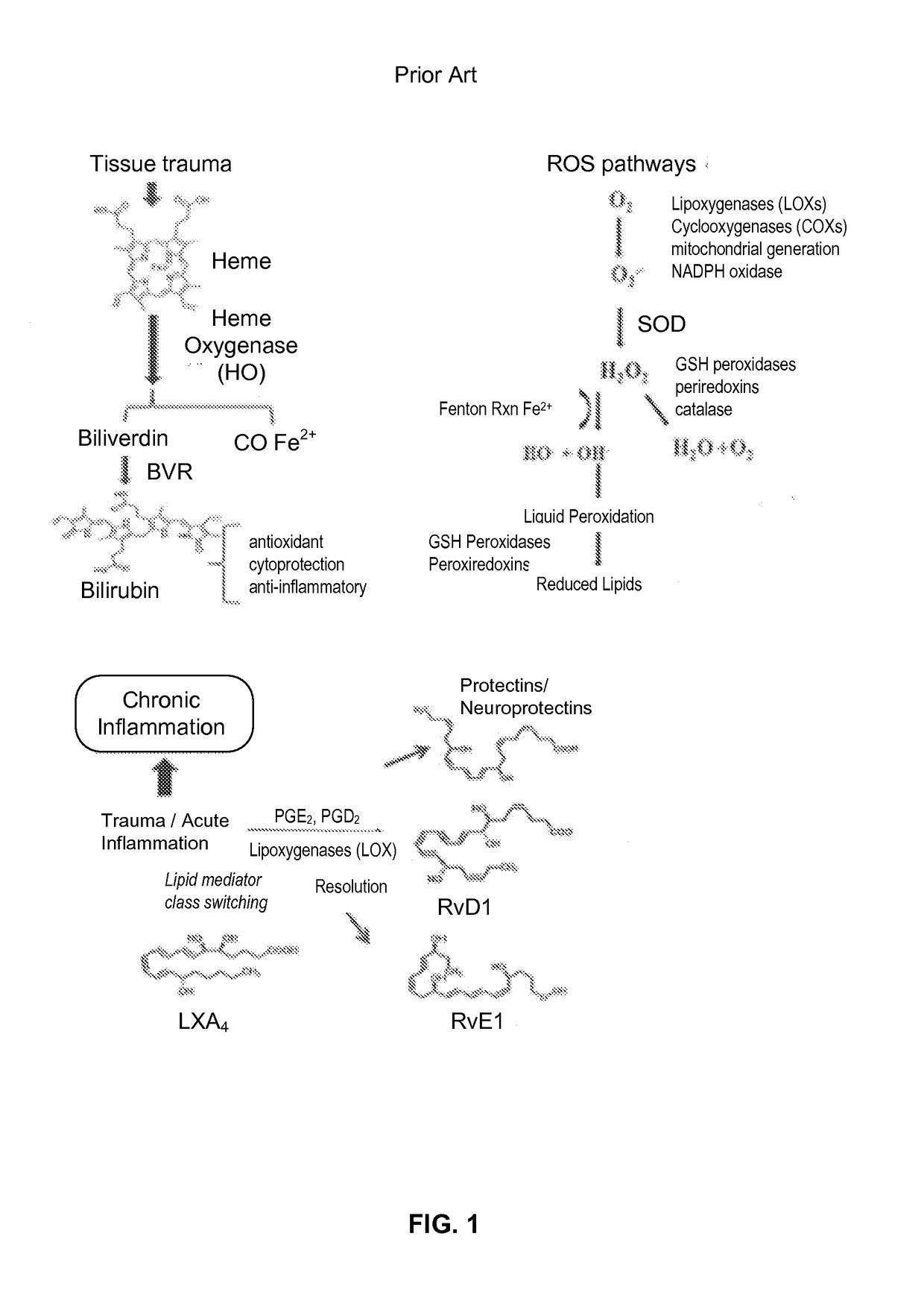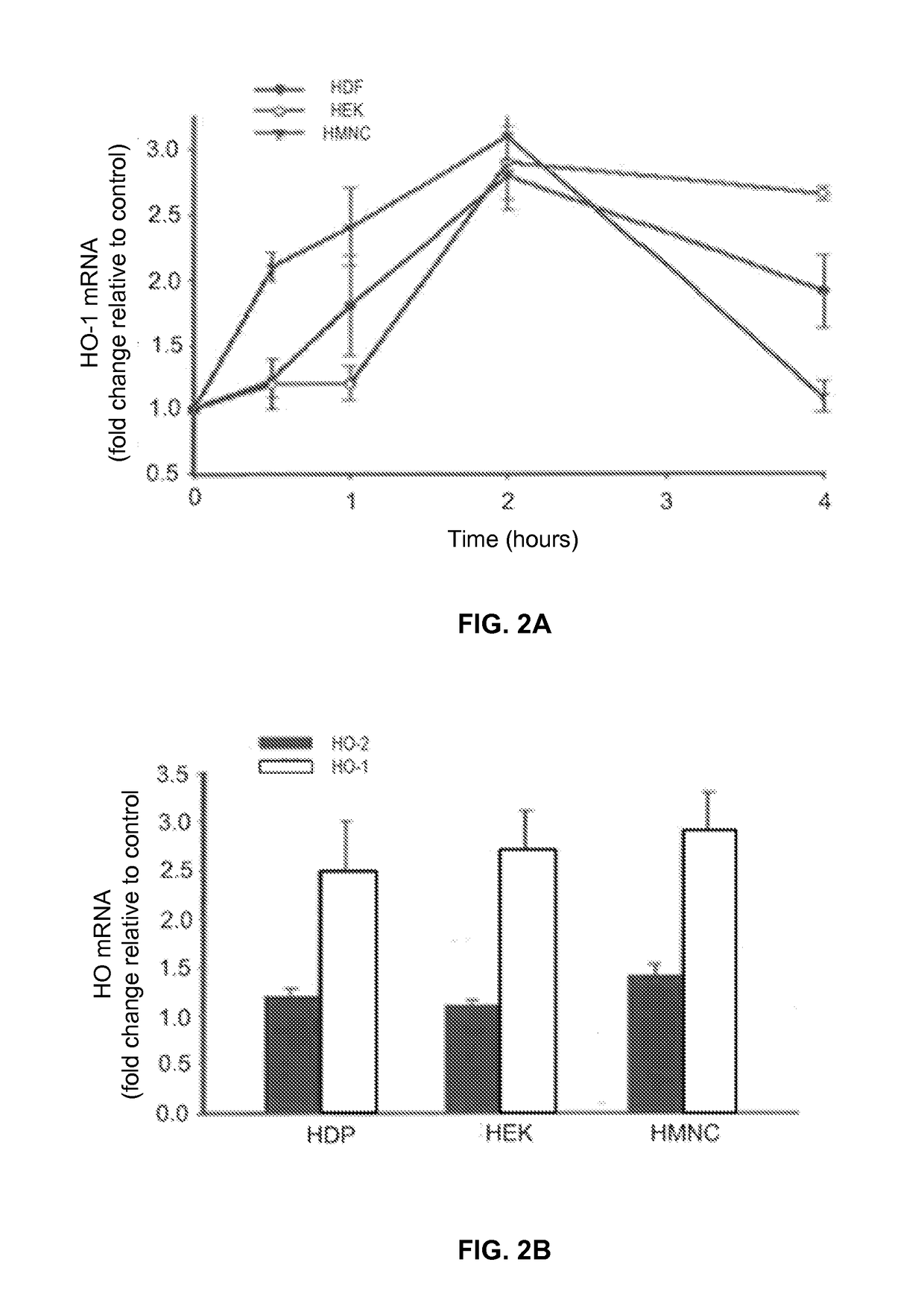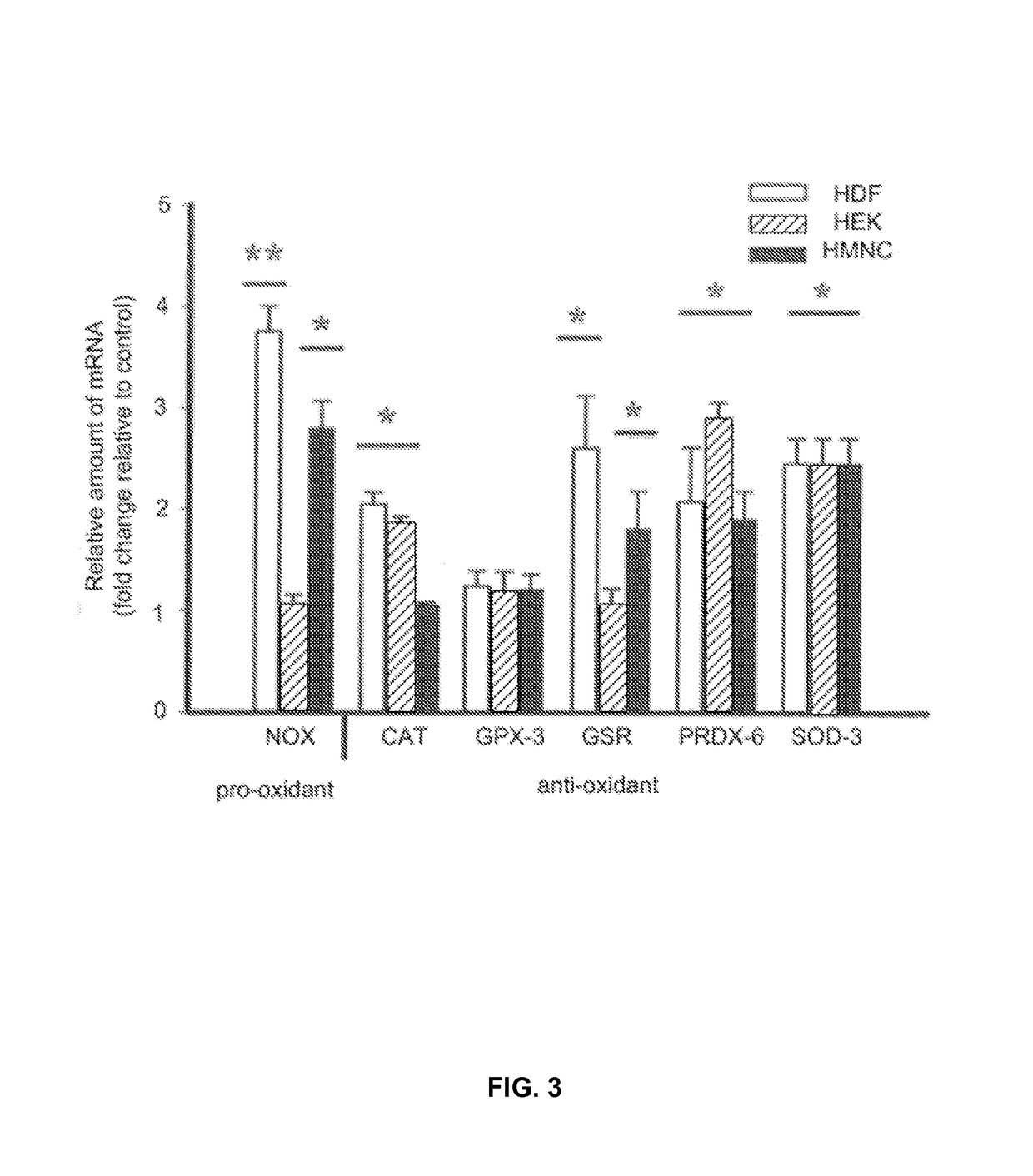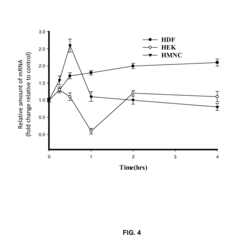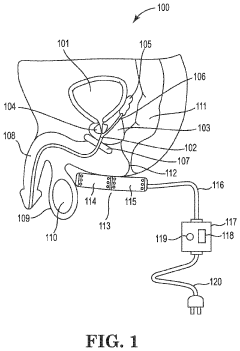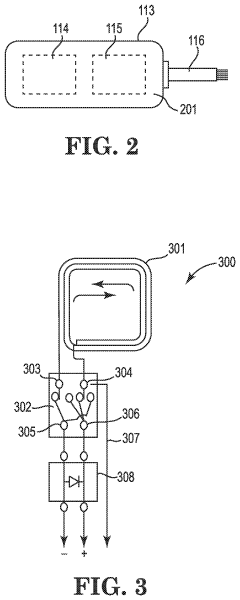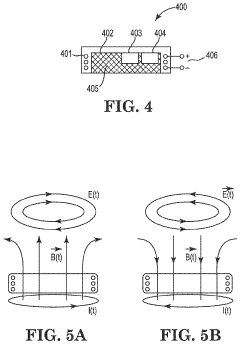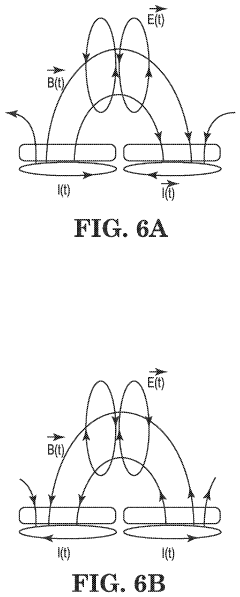How PEMF Therapy Contributes to Anti-Inflammatory Processes?
AUG 11, 20259 MIN READ
Generate Your Research Report Instantly with AI Agent
Patsnap Eureka helps you evaluate technical feasibility & market potential.
PEMF Therapy Background and Objectives
Pulsed Electromagnetic Field (PEMF) therapy has emerged as a promising non-invasive treatment modality in recent years. This technology harnesses the power of electromagnetic fields to stimulate cellular processes and promote healing. The evolution of PEMF therapy can be traced back to the mid-20th century when scientists first began exploring the effects of electromagnetic fields on biological systems.
Initially, PEMF therapy was primarily used for bone healing and pain management. However, as research progressed, its potential applications expanded to include a wide range of medical conditions, including inflammatory disorders. The technology has undergone significant refinement over the decades, with advancements in both the devices used to generate electromagnetic fields and our understanding of their biological effects.
The primary objective of PEMF therapy in the context of anti-inflammatory processes is to modulate the body's inflammatory response at a cellular level. This aim aligns with the growing recognition of inflammation as a key factor in numerous chronic diseases and the need for more targeted, less invasive treatment options.
Current research in PEMF therapy focuses on elucidating the precise mechanisms by which electromagnetic fields interact with cellular components and signaling pathways involved in inflammation. Scientists are particularly interested in how PEMF therapy affects the production and activity of pro-inflammatory and anti-inflammatory mediators, as well as its impact on immune cell function and tissue repair processes.
The development of PEMF therapy for anti-inflammatory applications is driven by several factors. These include the increasing prevalence of chronic inflammatory conditions, the limitations of existing anti-inflammatory treatments, and the growing demand for non-pharmacological interventions with fewer side effects. Additionally, the potential for PEMF therapy to be used as an adjunct to conventional treatments offers exciting possibilities for enhancing overall therapeutic outcomes.
As the field progresses, researchers are exploring various parameters of PEMF therapy, such as frequency, intensity, and duration of exposure, to optimize its anti-inflammatory effects. There is also a growing interest in developing more targeted PEMF devices that can deliver electromagnetic fields to specific tissues or organs affected by inflammation.
The ultimate goal of PEMF therapy research in the context of anti-inflammatory processes is to establish a robust scientific foundation for its clinical application. This includes determining the most effective treatment protocols, identifying the patient populations most likely to benefit, and understanding any potential long-term effects or contraindications.
Initially, PEMF therapy was primarily used for bone healing and pain management. However, as research progressed, its potential applications expanded to include a wide range of medical conditions, including inflammatory disorders. The technology has undergone significant refinement over the decades, with advancements in both the devices used to generate electromagnetic fields and our understanding of their biological effects.
The primary objective of PEMF therapy in the context of anti-inflammatory processes is to modulate the body's inflammatory response at a cellular level. This aim aligns with the growing recognition of inflammation as a key factor in numerous chronic diseases and the need for more targeted, less invasive treatment options.
Current research in PEMF therapy focuses on elucidating the precise mechanisms by which electromagnetic fields interact with cellular components and signaling pathways involved in inflammation. Scientists are particularly interested in how PEMF therapy affects the production and activity of pro-inflammatory and anti-inflammatory mediators, as well as its impact on immune cell function and tissue repair processes.
The development of PEMF therapy for anti-inflammatory applications is driven by several factors. These include the increasing prevalence of chronic inflammatory conditions, the limitations of existing anti-inflammatory treatments, and the growing demand for non-pharmacological interventions with fewer side effects. Additionally, the potential for PEMF therapy to be used as an adjunct to conventional treatments offers exciting possibilities for enhancing overall therapeutic outcomes.
As the field progresses, researchers are exploring various parameters of PEMF therapy, such as frequency, intensity, and duration of exposure, to optimize its anti-inflammatory effects. There is also a growing interest in developing more targeted PEMF devices that can deliver electromagnetic fields to specific tissues or organs affected by inflammation.
The ultimate goal of PEMF therapy research in the context of anti-inflammatory processes is to establish a robust scientific foundation for its clinical application. This includes determining the most effective treatment protocols, identifying the patient populations most likely to benefit, and understanding any potential long-term effects or contraindications.
Market Analysis for PEMF Anti-Inflammatory Applications
The market for PEMF (Pulsed Electromagnetic Field) therapy in anti-inflammatory applications is experiencing significant growth, driven by increasing awareness of its potential benefits and a growing demand for non-invasive treatment options. The global PEMF therapy market, which includes anti-inflammatory applications, is projected to expand at a compound annual growth rate (CAGR) of over 5% from 2021 to 2026.
The anti-inflammatory segment of the PEMF market is particularly promising, as chronic inflammation is associated with numerous health conditions, including arthritis, cardiovascular diseases, and autoimmune disorders. The rising prevalence of these conditions, coupled with an aging population in many developed countries, is fueling the demand for effective anti-inflammatory therapies.
North America currently holds the largest market share in the PEMF therapy industry, followed by Europe. This dominance is attributed to advanced healthcare infrastructure, higher healthcare expenditure, and greater awareness among both healthcare professionals and patients. However, the Asia-Pacific region is expected to witness the fastest growth in the coming years, driven by improving healthcare access and increasing disposable incomes in countries like China and India.
The market is characterized by a mix of established medical device companies and specialized PEMF therapy providers. Key players in this space include OMI, Bemer Group, and Orthofix Medical Inc. These companies are investing heavily in research and development to enhance the efficacy of PEMF devices for anti-inflammatory applications and to expand their product portfolios.
Consumer-grade PEMF devices for home use represent a rapidly growing segment within the market. These devices are becoming increasingly popular among individuals seeking to manage chronic inflammation and pain without relying solely on pharmaceutical interventions. The COVID-19 pandemic has further accelerated this trend, as more people look for at-home treatment options.
Despite the positive growth outlook, the PEMF anti-inflammatory market faces several challenges. These include the need for more extensive clinical research to validate the efficacy of PEMF therapy for various inflammatory conditions, regulatory hurdles in some regions, and the relatively high cost of advanced PEMF devices, which may limit adoption in price-sensitive markets.
Looking ahead, technological advancements are expected to drive market growth. Innovations such as wearable PEMF devices, integration with smartphone apps for personalized treatment protocols, and combination therapies that pair PEMF with other modalities are likely to expand the market's potential. Additionally, as more research emerges supporting the anti-inflammatory effects of PEMF therapy, it is anticipated that insurance coverage for these treatments will improve, further boosting market growth.
The anti-inflammatory segment of the PEMF market is particularly promising, as chronic inflammation is associated with numerous health conditions, including arthritis, cardiovascular diseases, and autoimmune disorders. The rising prevalence of these conditions, coupled with an aging population in many developed countries, is fueling the demand for effective anti-inflammatory therapies.
North America currently holds the largest market share in the PEMF therapy industry, followed by Europe. This dominance is attributed to advanced healthcare infrastructure, higher healthcare expenditure, and greater awareness among both healthcare professionals and patients. However, the Asia-Pacific region is expected to witness the fastest growth in the coming years, driven by improving healthcare access and increasing disposable incomes in countries like China and India.
The market is characterized by a mix of established medical device companies and specialized PEMF therapy providers. Key players in this space include OMI, Bemer Group, and Orthofix Medical Inc. These companies are investing heavily in research and development to enhance the efficacy of PEMF devices for anti-inflammatory applications and to expand their product portfolios.
Consumer-grade PEMF devices for home use represent a rapidly growing segment within the market. These devices are becoming increasingly popular among individuals seeking to manage chronic inflammation and pain without relying solely on pharmaceutical interventions. The COVID-19 pandemic has further accelerated this trend, as more people look for at-home treatment options.
Despite the positive growth outlook, the PEMF anti-inflammatory market faces several challenges. These include the need for more extensive clinical research to validate the efficacy of PEMF therapy for various inflammatory conditions, regulatory hurdles in some regions, and the relatively high cost of advanced PEMF devices, which may limit adoption in price-sensitive markets.
Looking ahead, technological advancements are expected to drive market growth. Innovations such as wearable PEMF devices, integration with smartphone apps for personalized treatment protocols, and combination therapies that pair PEMF with other modalities are likely to expand the market's potential. Additionally, as more research emerges supporting the anti-inflammatory effects of PEMF therapy, it is anticipated that insurance coverage for these treatments will improve, further boosting market growth.
Current PEMF Technology and Challenges
Pulsed Electromagnetic Field (PEMF) therapy has gained significant attention in recent years as a non-invasive treatment for various inflammatory conditions. However, the current state of PEMF technology faces several challenges that need to be addressed to enhance its efficacy and widespread adoption.
One of the primary challenges in PEMF technology is the lack of standardization in treatment protocols. Different devices employ varying frequencies, intensities, and waveforms, making it difficult to compare results across studies and establish optimal treatment parameters. This inconsistency hampers the development of evidence-based guidelines for PEMF therapy in anti-inflammatory applications.
Another significant challenge is the limited understanding of the precise mechanisms by which PEMF therapy exerts its anti-inflammatory effects. While studies have shown promising results, the exact cellular and molecular pathways involved remain unclear. This knowledge gap hinders the optimization of PEMF devices and treatment protocols for specific inflammatory conditions.
The current PEMF technology also faces limitations in terms of penetration depth and targeted delivery. Many existing devices struggle to deliver effective electromagnetic fields to deep-seated tissues, potentially limiting their efficacy in treating systemic inflammatory disorders. Developing more advanced coil designs and field-focusing techniques is crucial to overcome this challenge.
Furthermore, the durability and portability of PEMF devices present ongoing challenges. Many current devices are bulky and require frequent maintenance, limiting their use in home-based or long-term treatment settings. Improving the design and materials used in PEMF devices to enhance their longevity and user-friendliness is essential for broader adoption.
The integration of PEMF therapy with other treatment modalities is another area that requires further development. While PEMF has shown promise as a standalone therapy, its potential synergistic effects with pharmaceutical interventions or other physical therapies remain largely unexplored. Investigating these combinations could lead to more comprehensive and effective anti-inflammatory treatments.
Additionally, the current PEMF technology faces challenges in terms of personalization and real-time monitoring. Most devices offer limited customization options and lack the ability to adapt treatment parameters based on individual patient responses. Incorporating advanced sensors and artificial intelligence algorithms could enable more tailored and responsive PEMF therapies.
Lastly, the regulatory landscape for PEMF devices presents challenges for manufacturers and researchers. The classification and approval processes for these devices vary across different countries, potentially slowing down innovation and market access. Harmonizing regulatory standards and streamlining approval processes could accelerate the development and adoption of advanced PEMF technologies for anti-inflammatory applications.
One of the primary challenges in PEMF technology is the lack of standardization in treatment protocols. Different devices employ varying frequencies, intensities, and waveforms, making it difficult to compare results across studies and establish optimal treatment parameters. This inconsistency hampers the development of evidence-based guidelines for PEMF therapy in anti-inflammatory applications.
Another significant challenge is the limited understanding of the precise mechanisms by which PEMF therapy exerts its anti-inflammatory effects. While studies have shown promising results, the exact cellular and molecular pathways involved remain unclear. This knowledge gap hinders the optimization of PEMF devices and treatment protocols for specific inflammatory conditions.
The current PEMF technology also faces limitations in terms of penetration depth and targeted delivery. Many existing devices struggle to deliver effective electromagnetic fields to deep-seated tissues, potentially limiting their efficacy in treating systemic inflammatory disorders. Developing more advanced coil designs and field-focusing techniques is crucial to overcome this challenge.
Furthermore, the durability and portability of PEMF devices present ongoing challenges. Many current devices are bulky and require frequent maintenance, limiting their use in home-based or long-term treatment settings. Improving the design and materials used in PEMF devices to enhance their longevity and user-friendliness is essential for broader adoption.
The integration of PEMF therapy with other treatment modalities is another area that requires further development. While PEMF has shown promise as a standalone therapy, its potential synergistic effects with pharmaceutical interventions or other physical therapies remain largely unexplored. Investigating these combinations could lead to more comprehensive and effective anti-inflammatory treatments.
Additionally, the current PEMF technology faces challenges in terms of personalization and real-time monitoring. Most devices offer limited customization options and lack the ability to adapt treatment parameters based on individual patient responses. Incorporating advanced sensors and artificial intelligence algorithms could enable more tailored and responsive PEMF therapies.
Lastly, the regulatory landscape for PEMF devices presents challenges for manufacturers and researchers. The classification and approval processes for these devices vary across different countries, potentially slowing down innovation and market access. Harmonizing regulatory standards and streamlining approval processes could accelerate the development and adoption of advanced PEMF technologies for anti-inflammatory applications.
Existing PEMF Anti-Inflammatory Treatment Protocols
01 PEMF therapy for reducing inflammation
Pulsed electromagnetic field (PEMF) therapy is used to reduce inflammation in various tissues and organs. The therapy involves applying electromagnetic fields to the affected areas, which can help modulate the inflammatory response, reduce pain, and promote healing. This non-invasive treatment method has shown promise in managing various inflammatory conditions.- PEMF therapy for reducing inflammation: Pulsed Electromagnetic Field (PEMF) therapy is used to reduce inflammation in various body tissues. This non-invasive treatment method applies electromagnetic fields to stimulate cellular repair and reduce inflammatory responses, potentially offering relief for conditions characterized by chronic inflammation.
- PEMF devices for targeted anti-inflammatory treatment: Specialized PEMF devices are designed to deliver targeted anti-inflammatory treatment to specific body areas. These devices can be tailored to treat various conditions, from musculoskeletal disorders to neurological issues, by applying precise electromagnetic pulses to affected regions.
- Combination of PEMF with pharmaceutical agents: Research explores the synergistic effects of combining PEMF therapy with pharmaceutical anti-inflammatory agents. This approach aims to enhance the overall efficacy of anti-inflammatory treatments by leveraging the benefits of both electromagnetic stimulation and traditional medication.
- PEMF therapy protocols for chronic inflammatory conditions: Specific PEMF therapy protocols are developed for treating chronic inflammatory conditions such as arthritis, tendinitis, and inflammatory bowel diseases. These protocols involve optimized frequency, intensity, and duration of electromagnetic field application to maximize anti-inflammatory effects.
- Cellular mechanisms of PEMF anti-inflammatory action: Research investigates the cellular and molecular mechanisms underlying the anti-inflammatory effects of PEMF therapy. Studies focus on how electromagnetic fields influence inflammatory mediators, cytokine production, and cellular signaling pathways involved in the inflammatory response.
02 PEMF devices for targeted anti-inflammatory treatment
Specialized PEMF devices are designed for targeted anti-inflammatory treatment. These devices can be tailored to specific body parts or conditions, allowing for more precise and effective therapy. The devices may include adjustable settings for frequency, intensity, and duration of the electromagnetic pulses to optimize the anti-inflammatory effects.Expand Specific Solutions03 Combination of PEMF therapy with other anti-inflammatory treatments
PEMF therapy can be combined with other anti-inflammatory treatments to enhance overall efficacy. This may include the use of PEMF alongside pharmaceutical interventions, physical therapy, or other complementary therapies. The synergistic effects of these combined approaches can potentially lead to improved outcomes in managing inflammatory conditions.Expand Specific Solutions04 PEMF therapy for specific inflammatory conditions
Research has explored the use of PEMF therapy for specific inflammatory conditions, such as arthritis, tendinitis, and neuroinflammation. The therapy's ability to modulate inflammatory pathways and promote tissue repair makes it a promising approach for these targeted applications. Studies have investigated optimal treatment protocols for different inflammatory disorders.Expand Specific Solutions05 Mechanisms of PEMF-induced anti-inflammatory effects
Investigations into the mechanisms underlying PEMF-induced anti-inflammatory effects have revealed various cellular and molecular pathways. These may include modulation of inflammatory mediators, alteration of cell signaling pathways, and changes in gene expression related to inflammation. Understanding these mechanisms can help optimize PEMF therapy protocols and develop more effective anti-inflammatory treatments.Expand Specific Solutions
Key PEMF Device Manufacturers and Researchers
The PEMF therapy market for anti-inflammatory processes is in a growth phase, with increasing adoption across medical and wellness sectors. The market size is expanding, driven by rising chronic disease prevalence and growing interest in non-invasive treatments. Technologically, PEMF therapy is advancing, with companies like Venus Concept Ltd. and Regenesis Biomedical, Inc. leading innovation. These firms, along with emerging players such as SofPulse, Inc. and Humanity Neurotech, Inc., are developing more sophisticated, targeted PEMF devices. Research institutions like Shenyang Pharmaceutical University and the National University of Singapore are contributing to the scientific understanding of PEMF's anti-inflammatory mechanisms, further validating its efficacy and potentially opening new application areas.
Venus Concept Ltd.
Technical Solution: Venus Concept has developed the Venus Pulse technology, a PEMF system integrated into their aesthetic and medical devices. The Venus Pulse technology utilizes multi-polar magnetic fields to deliver PEMF therapy deep into the tissue. This approach is designed to stimulate fibroblast proliferation, enhance collagen synthesis, and promote angiogenesis, all of which contribute to the anti-inflammatory process[10]. The company's devices, such as the Venus Legacy and Venus Viva, combine PEMF with other modalities like radiofrequency to enhance overall therapeutic effects. In the context of anti-inflammatory processes, Venus Concept's PEMF technology has shown promise in reducing inflammation associated with various dermatological conditions and musculoskeletal disorders[11]. The pulsed electromagnetic fields generated by their devices are believed to modulate the inflammatory response by influencing cellular signaling pathways and promoting the release of anti-inflammatory mediators[12].
Strengths: Integration of PEMF with other therapeutic modalities, versatile applications in aesthetics and medical treatments. Weaknesses: Primary focus on aesthetic applications may limit research into broader anti-inflammatory uses, higher cost compared to standalone PEMF devices.
Regenesis Biomedical, Inc.
Technical Solution: Regenesis Biomedical has developed the Provant Therapy System, a PEMF device specifically designed for post-operative pain and edema management. The system utilizes a proprietary dual-field PEMF technology that generates both electric and magnetic fields to penetrate deep into tissues[4]. This approach is believed to enhance cellular energy production and promote the release of anti-inflammatory mediators. The Provant system operates at a specific frequency of 27.12 MHz, which has been shown to be particularly effective in modulating inflammatory responses[5]. Clinical studies have demonstrated that the Provant Therapy System can significantly reduce post-operative pain and narcotic use, as well as accelerate wound healing by reducing inflammation and promoting tissue repair[6].
Strengths: FDA-cleared for post-operative use, non-invasive treatment option, demonstrated reduction in narcotic use. Weaknesses: Limited to specific post-operative applications, may not be as versatile for other inflammatory conditions.
Core PEMF Anti-Inflammatory Research Findings
Treatment of conditions susceptible to pulsed electromagnetic field therapy
PatentActiveUS20170354830A1
Innovation
- PEMF therapy is administered to modulate gene expression associated with inflammation pathways, including heme oxygenase, antioxidant enzymes, lipid mediator biosynthesis, and cytokines, using specific parameters such as electric field strength, pulse rate, and duration to produce measurable clinical effects on pain, nerve function, and wound healing.
Method and apparatus for treatment of benign prostatic hyperplasia (BPH)
PatentInactiveUS20230398368A1
Innovation
- A non-invasive method utilizing pulsed electromagnetic field (PEMF) stimulation to increase the number of A2a receptors on cell membranes, enhancing the anti-inflammatory effects of adenosine and providing immunosuppressive action to reduce chronic inflammation and tissue damage in the prostate.
Safety and Regulatory Considerations for PEMF Devices
The safety and regulatory considerations for PEMF (Pulsed Electromagnetic Field) devices are crucial aspects that manufacturers, healthcare providers, and users must carefully address. These considerations are essential to ensure the efficacy and safety of PEMF therapy in anti-inflammatory processes while complying with regulatory standards.
PEMF devices are classified as medical devices in many jurisdictions, including the United States, where they fall under the purview of the Food and Drug Administration (FDA). The FDA has established specific guidelines for PEMF devices, categorizing them based on their intended use and potential risks. Class II devices, which include most PEMF devices, require premarket notification (510(k)) before they can be legally marketed.
Safety considerations for PEMF devices primarily focus on the potential risks associated with electromagnetic field exposure. While PEMF therapy is generally considered safe, manufacturers must conduct thorough testing to ensure that their devices do not exceed recommended exposure limits. The International Commission on Non-Ionizing Radiation Protection (ICNIRP) provides guidelines for electromagnetic field exposure, which are widely recognized and adopted by regulatory bodies worldwide.
Electromagnetic compatibility (EMC) is another critical safety aspect. PEMF devices must not interfere with other electronic medical devices or be susceptible to interference from external sources. Manufacturers are required to conduct EMC testing and demonstrate compliance with relevant standards, such as IEC 60601-1-2 for medical electrical equipment.
Quality management systems play a vital role in ensuring the safety and effectiveness of PEMF devices. Manufacturers are expected to implement and maintain robust quality management systems that comply with ISO 13485 standards. These systems encompass all aspects of device design, production, and post-market surveillance.
Clinical evidence is increasingly important in the regulatory landscape for PEMF devices. Manufacturers must provide substantial clinical data demonstrating the safety and efficacy of their devices in treating specific conditions, including anti-inflammatory processes. This evidence is crucial for obtaining regulatory approvals and supporting marketing claims.
Post-market surveillance is an ongoing requirement for PEMF device manufacturers. They must monitor the performance and safety of their devices in real-world settings, report adverse events to regulatory authorities, and implement corrective actions when necessary. This continuous vigilance helps identify and mitigate potential risks that may not have been apparent during pre-market evaluations.
As the understanding of PEMF therapy's mechanisms in anti-inflammatory processes advances, regulatory requirements may evolve. Manufacturers and healthcare providers must stay informed about changes in regulations and guidelines to ensure continued compliance and patient safety. Additionally, as PEMF therapy gains wider acceptance, there may be increased scrutiny on device claims and marketing practices, necessitating robust scientific evidence to support therapeutic benefits.
PEMF devices are classified as medical devices in many jurisdictions, including the United States, where they fall under the purview of the Food and Drug Administration (FDA). The FDA has established specific guidelines for PEMF devices, categorizing them based on their intended use and potential risks. Class II devices, which include most PEMF devices, require premarket notification (510(k)) before they can be legally marketed.
Safety considerations for PEMF devices primarily focus on the potential risks associated with electromagnetic field exposure. While PEMF therapy is generally considered safe, manufacturers must conduct thorough testing to ensure that their devices do not exceed recommended exposure limits. The International Commission on Non-Ionizing Radiation Protection (ICNIRP) provides guidelines for electromagnetic field exposure, which are widely recognized and adopted by regulatory bodies worldwide.
Electromagnetic compatibility (EMC) is another critical safety aspect. PEMF devices must not interfere with other electronic medical devices or be susceptible to interference from external sources. Manufacturers are required to conduct EMC testing and demonstrate compliance with relevant standards, such as IEC 60601-1-2 for medical electrical equipment.
Quality management systems play a vital role in ensuring the safety and effectiveness of PEMF devices. Manufacturers are expected to implement and maintain robust quality management systems that comply with ISO 13485 standards. These systems encompass all aspects of device design, production, and post-market surveillance.
Clinical evidence is increasingly important in the regulatory landscape for PEMF devices. Manufacturers must provide substantial clinical data demonstrating the safety and efficacy of their devices in treating specific conditions, including anti-inflammatory processes. This evidence is crucial for obtaining regulatory approvals and supporting marketing claims.
Post-market surveillance is an ongoing requirement for PEMF device manufacturers. They must monitor the performance and safety of their devices in real-world settings, report adverse events to regulatory authorities, and implement corrective actions when necessary. This continuous vigilance helps identify and mitigate potential risks that may not have been apparent during pre-market evaluations.
As the understanding of PEMF therapy's mechanisms in anti-inflammatory processes advances, regulatory requirements may evolve. Manufacturers and healthcare providers must stay informed about changes in regulations and guidelines to ensure continued compliance and patient safety. Additionally, as PEMF therapy gains wider acceptance, there may be increased scrutiny on device claims and marketing practices, necessitating robust scientific evidence to support therapeutic benefits.
Cost-Effectiveness of PEMF Anti-Inflammatory Treatments
The cost-effectiveness of PEMF (Pulsed Electromagnetic Field) anti-inflammatory treatments is a crucial consideration for both healthcare providers and patients. This analysis examines the economic viability of PEMF therapy compared to traditional anti-inflammatory treatments, taking into account both direct and indirect costs.
PEMF therapy has shown promising results in reducing inflammation without the side effects associated with long-term use of pharmaceutical interventions. The initial investment in PEMF devices may be higher than traditional treatments, but the long-term cost savings can be significant. Patients using PEMF therapy often report reduced need for pain medications and fewer doctor visits, leading to decreased healthcare expenditures over time.
One of the key advantages of PEMF therapy is its non-invasive nature, which eliminates the costs associated with surgical interventions and post-operative care. Additionally, the therapy can be self-administered at home, reducing the frequency of clinical visits and associated costs. This aspect is particularly beneficial for patients with chronic inflammatory conditions who require ongoing treatment.
When evaluating the cost-effectiveness of PEMF therapy, it is essential to consider the potential reduction in lost productivity due to inflammation-related disabilities. By effectively managing inflammation and pain, PEMF therapy may enable patients to return to work sooner or maintain higher levels of productivity, resulting in indirect cost savings for both individuals and employers.
The durability of PEMF devices also contributes to their cost-effectiveness. Once purchased, a PEMF device can be used for multiple years, spreading the initial investment over a long period. This contrasts with the recurring costs of pharmaceutical treatments, which require continuous purchases.
However, it is important to note that the cost-effectiveness of PEMF therapy can vary depending on the specific condition being treated and the individual patient's response. Some patients may require a combination of PEMF therapy and traditional treatments for optimal results, which could impact the overall cost-effectiveness.
In conclusion, while more comprehensive long-term studies are needed to fully quantify the economic benefits, initial assessments suggest that PEMF anti-inflammatory treatments can be a cost-effective alternative or complement to traditional therapies for many patients, particularly those with chronic inflammatory conditions.
PEMF therapy has shown promising results in reducing inflammation without the side effects associated with long-term use of pharmaceutical interventions. The initial investment in PEMF devices may be higher than traditional treatments, but the long-term cost savings can be significant. Patients using PEMF therapy often report reduced need for pain medications and fewer doctor visits, leading to decreased healthcare expenditures over time.
One of the key advantages of PEMF therapy is its non-invasive nature, which eliminates the costs associated with surgical interventions and post-operative care. Additionally, the therapy can be self-administered at home, reducing the frequency of clinical visits and associated costs. This aspect is particularly beneficial for patients with chronic inflammatory conditions who require ongoing treatment.
When evaluating the cost-effectiveness of PEMF therapy, it is essential to consider the potential reduction in lost productivity due to inflammation-related disabilities. By effectively managing inflammation and pain, PEMF therapy may enable patients to return to work sooner or maintain higher levels of productivity, resulting in indirect cost savings for both individuals and employers.
The durability of PEMF devices also contributes to their cost-effectiveness. Once purchased, a PEMF device can be used for multiple years, spreading the initial investment over a long period. This contrasts with the recurring costs of pharmaceutical treatments, which require continuous purchases.
However, it is important to note that the cost-effectiveness of PEMF therapy can vary depending on the specific condition being treated and the individual patient's response. Some patients may require a combination of PEMF therapy and traditional treatments for optimal results, which could impact the overall cost-effectiveness.
In conclusion, while more comprehensive long-term studies are needed to fully quantify the economic benefits, initial assessments suggest that PEMF anti-inflammatory treatments can be a cost-effective alternative or complement to traditional therapies for many patients, particularly those with chronic inflammatory conditions.
Unlock deeper insights with Patsnap Eureka Quick Research — get a full tech report to explore trends and direct your research. Try now!
Generate Your Research Report Instantly with AI Agent
Supercharge your innovation with Patsnap Eureka AI Agent Platform!
